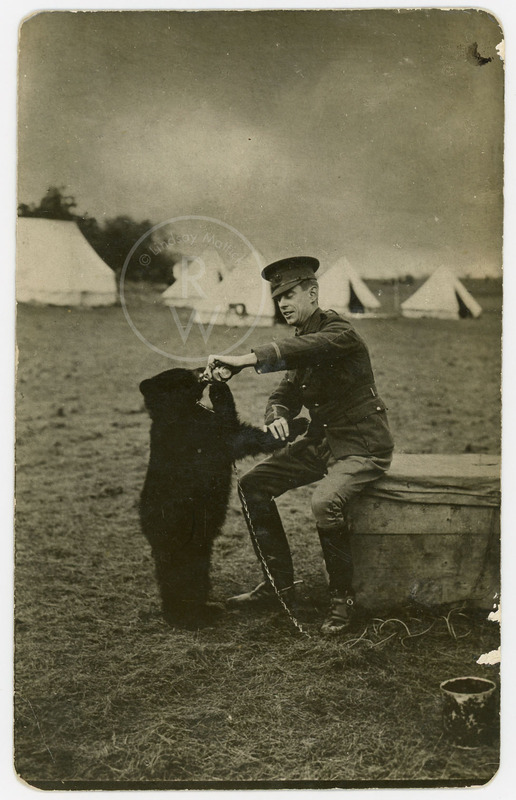To date, much photographic scholarship has taken place within the discipline of art history. These photographs, however, did not belong to the realm of art in their own time, nor do they now. As is inevitable with snapshots, some are aesthetically pleasing or particularly evocative, such as the image by professional photographer A.F. Marett of Winnie playfully biting the arm of a largely unseen soldier, the indistinct shapes of a military tent and three figures in the background lending the scene an otherworldly quality. Another photograph from Salisbury Plain depicts a seated, smiling Harry Colebourn in full military attire, feeding Winnie as she stands before him, her free paw held by his hand. Despite the fact of the photographer’s presence the two seem entirely alone. The effect is melancholic, and suggestive of Colebourn’s loneliness at the camp and reliance on this animal for emotional comfort. But to concentrate solely on what these photographs portray is to lose them as valuable objects for historical study. They are objects, as their condition makes plain. Most show signs of chemical deterioration, physical damage and use. The photograph of Colebourn and Winnie described above has a small hole at the top: it was once tacked to a wall. Numerous copy prints exist in the archive, suggesting the family’s desire to preserve these images of the elder Colebourn and his bear. Knowledge of how these photographs were used, kept and described by their owners reveals as much to researchers as an analysis of their subjects.
In the archive, these photographs are not separated from other items but exist alongside them. The loose snapshots are arranged in an album that also includes World War I-era military documents, a photocopied Animal Record Card from the London Zoo, and articles and correspondence related to Fred Colebourn’s effort to publicize his father’s role in the genesis of Winnie the Pooh, A.A. Milne’s iconic literary character. The card-mounted and framed photographs belong to the same collection as Colebourn’s five pocket-sized war diaries (one for each year of the conflict), the cigarette case he had inscribed with the battles he witnessed, his bag of veterinary instruments, and paperback copies of Winnie-the-Pooh books that belonged to one of his descendants.
